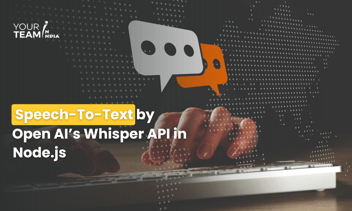Quick Summary: In the world of web development, security is paramount. Explore the art of crafting a secure RESTful API with JWT authentication in Node.js. This article provides a comprehensive guide to safeguarding your API ensuring data integrity and user privacy in an increasingly interconnected digital landscape.
Introduction
In today's interconnected world, securing your API endpoints is crucial. JSON Web Tokens (JWT) provide a powerful mechanism for authenticating users and securing API endpoints. In this article, we will walk through the process of implementing JWT authentication in a Node.js RESTful API.
Implementing JWT Authentication in a Node.js RESTful API
1. Setting Up the Project
Initializing a Node.js project:-
Installing necessary dependencies:-
Basic folder structure
2. Creating the User Model
Defining the User Schema:-
Implementing user registration and login routes:-
3. Implementing JWT Authentication
Generating JWT tokens upon successful login:-
Middleware for token verification
Protecting routes with authentication:-
4. Testing the Authentication
Using Postman for testing API endpoints:-
Send a POST request to /login with valid user credentials to receive a JWT token.
Send a GET request to /profile with the token provided in the Authorization header to access the protected route.
5. Handling Token Expiry and Refresh
Setting token expiration time:-
Implementing token refresh mechanism:-
6. Error Handling and Logging
Handling different types of errors:-
Implementing a logging mechanism:-
7. Adding Additional Security Measures
Implementing password policies:-
Conclusion
In this tutorial, we've covered the implementation of JWT authentication in a Node.js RESTful API. We started by setting up the project, creating a user model, and implementing user registration and login routes. Then, we added JWT authentication and protected routes and handled token expiration and refresh. We also covered error handling, logging, and additional security measures. By following these steps, you can build a secure API for your applications.
Remember, security is an ongoing process. Stay updated with best practices and consider additional security measures based on your specific application requirements. If you need professional help, hire node.js developers from Your Team in India and dive into an unparalleled experience.
Happy coding!








